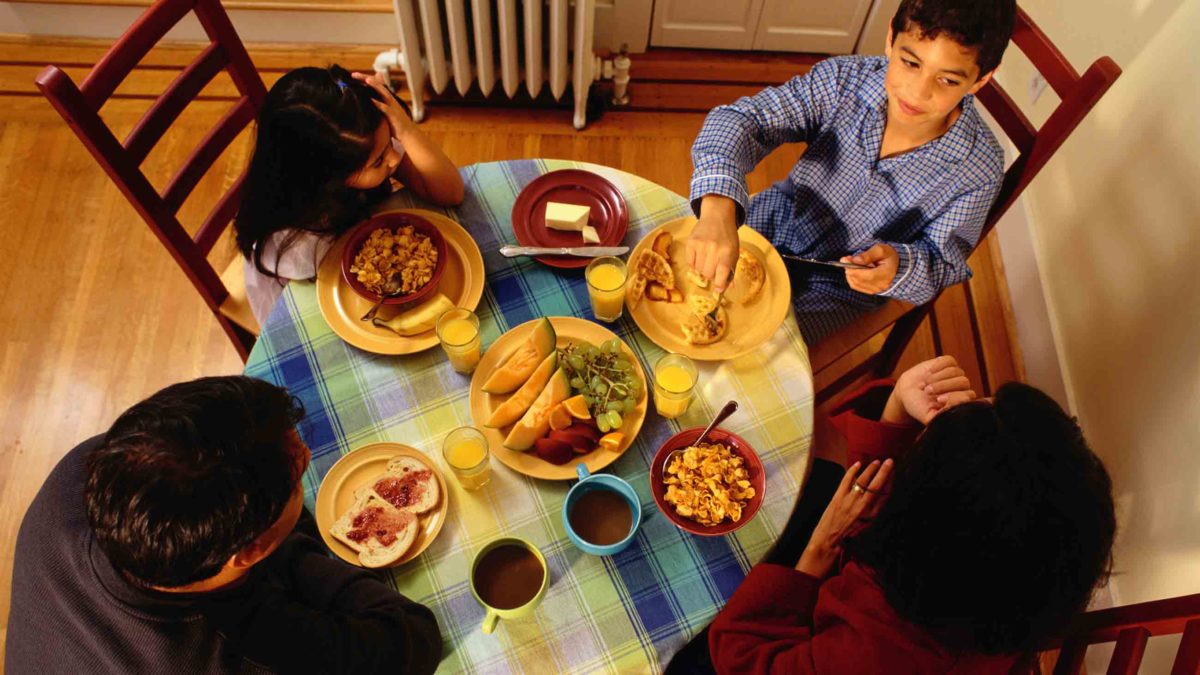Trump Wants to Cut Food Stamps. Research Suggests That’s Unwise.
President Trump’s budget proposed a 25 percent cut ($193 billion) to federal funds for the food stamp program, called the Supplemental Nutrition Assistance Program, over the next 10 years. And the House Budget Committee recommended a similar cut of more than 20 percent ($150 billion).

Some 41 million Americans rely on federal food assistance. Research suggests that helps the overall economy.
Visual: USDA/Flickr
The program expands and contracts annually with the economy and the number of people struggling with hunger, but it has no fixed spending cap. It currently serves about 41 million low-income Americans, three-quarters of them children, elderly people, or people with a disability.
Over the years, the assistance program has also been a favorite target for many Republican lawmakers, who have long bemoaned its costs. But research has repeatedly suggested that while there is always room for improvement in how the benefits are allocated, overall they reap real dividends for both public health and the economy.
Food stamp benefits are based on a bare-bones household budget developed by the U.S. Department of Agriculture. This “thrifty food plan” is the lowest-cost of four household spending-levels, updated annually, for a “nutritious diet.” It currently determines that a man between the ages of 19 and 50 would spend $42.80 on food weekly. A woman in the same range would spend $37.90, and a family of four with two preschool-aged children would spend $129.40.
Advocates say these benefits are already too low, and research bears this out. A 2015 report by former President Obama’s Council of Economic Advisors stated that SNAP was an effective anti-hunger tool. But it also cited studies showing that food stamps fall short of covering households’ food bills and are based on unrealistic assumptions about transportation, available time for cooking, the products stocked in stores, and food waste. This type of food insecurity can then lead to expensive hospital visits, low blood sugar, and weaker test scores in school.
A targeted expansion of government spending on food and nutrition would more effectively reduce deaths from cardiovascular disease, according to a study published in June in the journal PLOS Medicine. Subsidizing fruits and vegetables to reduce costs by just 10 percent for all Americans — not just SNAP recipients — for example, would do more to improve health than taxing sugar-sweetened soda or launching a mass media educational campaign to encourage a healthier diet, the authors of the study argued.
No one can predict how Congress will act now that their summer recess is over, but anti-hunger advocates are preparing for a legislative battle to protect SNAP not only from cuts, but also from conversion to state grants that would be capped. Legislators are likely to consider food stamp spending this fall as they take up debate over the Farm Bill, which has historically included SNAP.
“The government doesn’t have unlimited amounts of money,” U.S. Rep. Roger Marshall, a Kansas Republican, was quoted as saying recently by the Great Bend Tribune. He was responding to residents who had urged him to protect food stamps and other welfare. “We have to prioritize it to make sure we get it to the people who need it the most. I’m not ready to comment on what exactly I will oppose or not oppose on the Farm Bill.”
In 2005, a similar scenario loomed, according to Ellen Vollinger, legal director at the non-profit Food Research and Action Center and a veteran of Congress’s hunger games. Republicans controlled the House and the Senate, with President George W. Bush in office. SNAP initially was tagged for $3 billion in cuts. But lobbyists went to work. Their messages included USDA data showing that $1.84 in economic activity resulted from every $1 spent on SNAP benefits, Vollinger says. (The current return is five cents lower.)
Legislators eventually changed their minds. “And when that bill was signed in early 2006,” Vollinger says, “there were some things in it that were probably not great, but there was no nutrition cut, no SNAP cut.”
If deal-making in Washington, D.C., continues to proceed as fast as it has so far this week, we may soon find out if hunger-relief history repeats itself.










